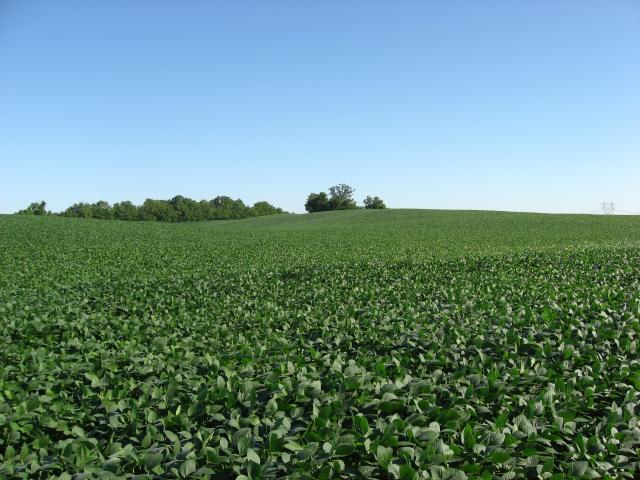
This fall, a silent crisis grips the heartland, hidden beneath acres of what appears to be a bountiful harvest. American farmers, the very backbone of our nation’s food supply, are hurting [1], [2], [6]. The narrative being spun by official channels often misses the stark, undeniable truth: a confluence of economic pressures has created an exceptionally tough year for farm finances [3]. Despite impressive crop yields across the Midwest and Great Plains, the economics of farming have become a brutal, unforgiving gauntlet [3].
The Crushing Economic Squeeze
Farmers find themselves in an untenable bind, squeezed from both ends of the economic spectrum. Production costs have surged, while the prices they receive for their meticulously grown crops have plummeted [1], [2], [4]. It’s a vicious cycle that has left many operating well below their break-even point [6].
Skyrocketing Input Costs
One of the most immediate pressures is the escalating cost of doing business. Farmers are grappling with high expenses for essential inputs like fertilizer [3]. Beyond the everyday costs, the political machinations of recent years have directly impacted their bottom line: President Trump’s tariffs, specifically, are noted for driving farmers’ costs even higher [4]. This isn’t just an abstract economic shift; it’s a tangible burden felt by individuals like Brady Holst, a farmer directly impacted by these economic forces [6]. The situation has grown so dire that soybean prices in North Dakota, for instance, have fallen even lower than they were during the initial trade war period of 2018, compounded by surging input costs [7].
Depressed Crop Prices
Simultaneously, the prices farmers receive for their harvests have tumbled significantly over the past three years [4], [6]. These market prices are simply not sustainable for farm operations, according to industry experts like Amanda Hoey, executive director of the Oregon Wheat Growers League [5]. This creates a perverse irony: farmers are victims of their own success, producing abundant harvests only to see their value diminished to unsustainable levels [6]. This predicament affects a wide range of commodities, with wheat growers in Oregon facing similar devastatingly low market prices [5].
The Trade War’s Unintended Harvest
The most significant and arguably most self-inflicted wound to American agriculture has been the trade war. This geopolitical struggle has effectively closed off one of their biggest markets [1], [2]. For Wisconsin soybean farmers, the beginning of harvest season is now marked by the painful absence of their largest buyer [3]. This international trade uncertainty, directly linked to tariffs, has amplified the financial struggles across the agricultural sector [3].
While government-led initiatives like tariff aid or a bailout have gained momentum [5], [7], they are widely viewed with skepticism by those on the ground. Many farmers regard this aid as merely a temporary measure [3], replacing only a fraction of the income they have already lost [6]. It’s a Band-Aid solution to a gaping wound, failing to address the fundamental market disruptions that continue to plague the industry.
Desperate Measures and an Uncertain Future
Facing this unprecedented financial strain, farmers are being forced into difficult decisions. With prices so low, many growers who can afford it are choosing to keep their grain in off-farm storage [5]. This strategy offers a modicum of flexibility, allowing farmers to market their produce at different times of the year in the hope of better prices [5]. However, this option itself comes with costs and risks, highlighting the desperation pervading the industry.
For some, like Matt Wood, a sixth-generation farmer in Helix, Oregon, survival hinges on specific circumstances. He and his son benefit from a very low overhead operation and the invaluable fortune of owning about half the land they farm [5]. Yet, even this relative stability is fragile. The overwhelming sentiment, as expressed by Hoey, is that if current market prices continue, many farmers will be forced to pivot dramatically, with a significant number doing something entirely different within the next five years [5].
This isn’t merely an economic downturn; it’s a systemic unraveling of the American farming dream, fueled by policy decisions that have prioritized abstract political battles over the tangible livelihoods of hardworking families. The official story often glosses over the devastating impact, but the receipts are clear: the nation’s farmers are facing desperate times [6], and the bitter harvest of this struggle will be felt across the country for years to come. The question remains: how much more can they endure before the fields lie fallow, victims of a manufactured crisis?
Sources & Footnotes
- https://www.facebook.com/NPR/posts/farmers-are-struggling-this-fall-despite-a-bountiful-harvest-production-costs-ar/1187125593284438/ ↩
- https://www.threads.com/@npr/post/DQB6WaviBsW/farmers-are-struggling-this-fall-despite-a-bountiful-harvest-production-costs-ar ↩
- https://www.wpr.org/news/farmers-trump-trade-war-bailout-harvest ↩
- https://www.reddit.com/r/Economics/comments/1o91edh/american_farmers_are_hurting_trumps_trade_war_is/ ↩
- https://www.opb.org/article/2025/10/16/oregon-wheat-farmers-bailout/ ↩
- https://www.npr.org/2025/10/16/nx-s1-5575115/farmers-trump-trade-war-china ↩
- https://www.agriculture.com/partners-weak-prices-squeeze-farmers-while-tariff-aid-gains-momentum-11824246 ↩

Leave a Reply